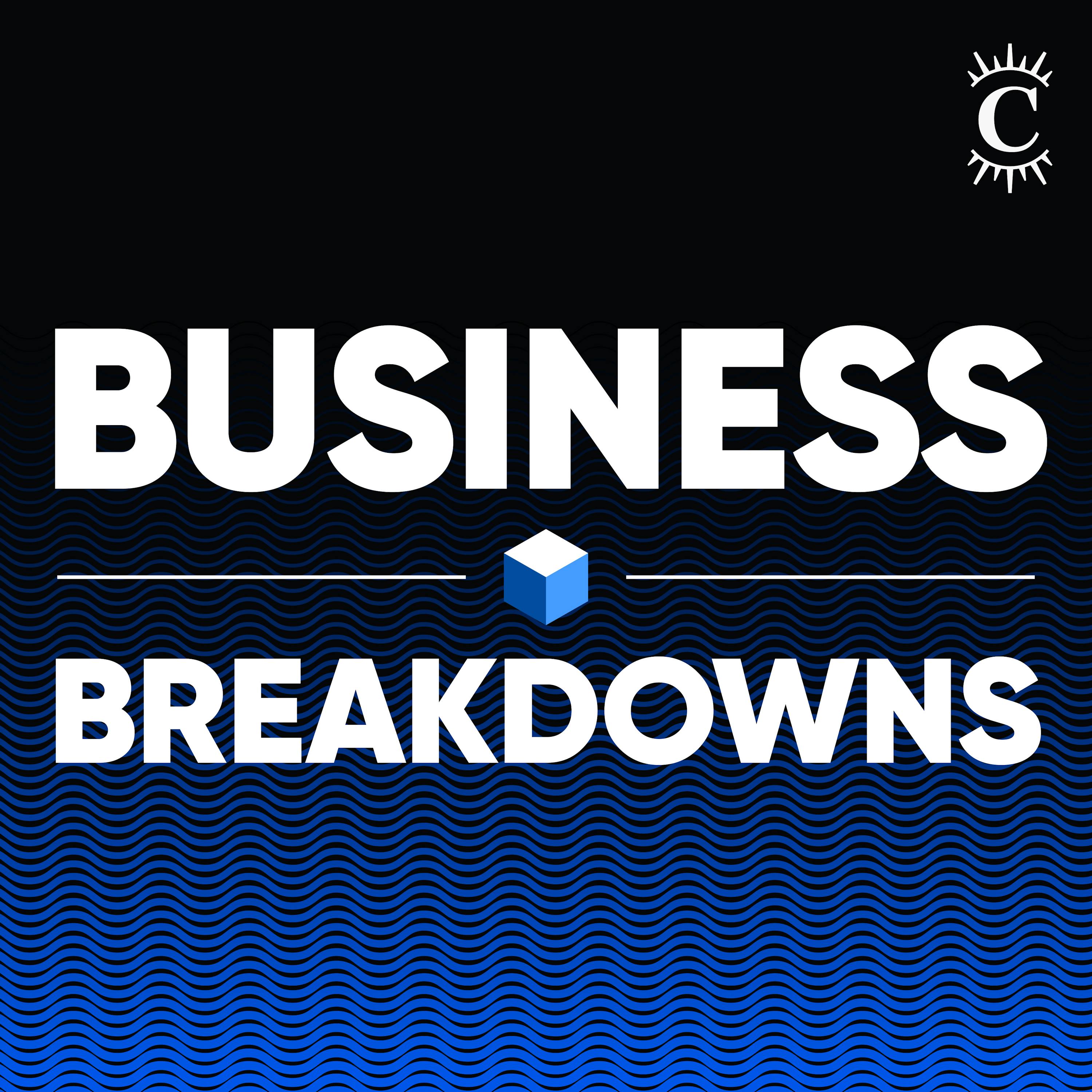

Business Breakdowns
Colossus | Investing & Business Podcasts
Learn how companies work from the people who know them best. Each episode dissects a single business - from its origins and model to its financials and competitive edge. Join hosts Matt Reustle and Zack Fuss as they uncover the lessons behind every success story. Learn more at www.joincolossus.com.
Episodes
Mentioned books

27 snips
Jun 29, 2022 • 1h 14min
Berkshire Hathaway: The Incomparable Compounder - [Business Breakdowns, EP. 63]
Chris Bloomstran, President and CIO of Semper Augustus, dives into the unique characteristics of Berkshire Hathaway, detailing its incredible rise from textile manufacturer to insurance powerhouse. He explains the concept of 'float' and how it fuels strategic investments. The discussion highlights Berkshire's disciplined capital allocation and its competitive advantages, particularly in the energy sector. Bloomstran shares insights on the investment legacy that Berkshire has built, making it essential listening for aspiring investors.

10 snips
Jun 27, 2022 • 1h 3min
Shopify: Tokengated Commerce - [Web3 Breakdowns, EP.28]
In this discussion, Alex Danco, a Shopify employee specializing in token-gated commerce, shares fascinating insights into how this concept is revolutionizing online shopping. He explains how blockchain technology enhances consumer experiences and interoperability in e-commerce. The talk highlights the transformative power of NFTs and digital wallets, giving token holders access to exclusive products. Danco also emphasizes the importance of understanding demand activation and meaningful connections to engage consumers in both digital and physical markets.

5 snips
Jun 22, 2022 • 1h 8min
Gogo: Internet for Private Jets - [Business Breakdowns, EP. 62]
In this discussion, Oak Thorne, who has spearheaded Gogo's transformation for 20 years, delves into the premium in-flight internet landscape tailored for private jets. He shares insights from his leadership journey across various sectors, emphasizing Gogo's shift from analog roots to digital innovation. Topics include the technical evolution of air-to-ground technology, competitive dynamics with satellite providers, and the intricate business model sustaining high-margin service revenue. Oak also reflects on building a resilient team culture amidst industry challenges.

5 snips
Jun 15, 2022 • 52min
Diploma: Specialized Distribution - [Business Breakdowns, EP. 61]
In this captivating discussion with Charlie Huggins, Head of Equities at WealthClub, listeners explore the world of Diploma, a specialized distributor of medical equipment and industrial components. Huggins reveals the company's impressive cash flow and strategic acquisitions in the life sciences sector. The conversation highlights Diploma's resilience in navigating market cyclicality and its competitive advantage through innovative inventory management. Ultimately, Huggins shares valuable insights into the importance of decentralization and pricing power in fostering long-term growth.

Jun 8, 2022 • 59min
PGA Tour: Playing Under Pressure - [Business Breakdowns, EP. 60]
Join Neil Schuster, co-founder of the golf media business No Laying Up, as he dives into the business side of the PGA Tour. Discover the fascinating concept of the 'Tiger Tax' and its effects on player earnings. Schuster explains how the Tour transitioned into a nonprofit and explores its revenue generation strategies. The discussion also touches on the rise of competing leagues like LIV Golf and the ongoing challenges of engaging modern audiences, including exciting collaborations with streaming platforms. Perfect for golf fans and business enthusiasts alike!

44 snips
May 25, 2022 • 1h 9min
Anduril: Building the Future of Defense - [Business Breakdowns, EP. 59]
Brian Schimpf, CEO and co-founder of Anduril, a pioneering defense tech company, digs into transforming the defense landscape. He shares insights on shifting from outdated cost-plus contracts to a more innovative firm-fixed pricing model. The conversation highlights the evolution of military tech with drone advancements and the need for ethical AI in defense. Schimpf also discusses navigating the complexities of government contracts, emphasizing agility and creativity in developing cutting-edge solutions for modern warfare.

31 snips
May 19, 2022 • 59min
Goldman Sachs: Fortune Favors the Old - [Business Breakdowns, EP. 58]
Marc Rubinstein, a seasoned financial analyst known for his expertise in investment banking, joins the discussion about Goldman Sachs. They unravel the bank's transformation from niche player to industry titan, and the evolving business dynamics post-financial crisis. Topics include the complexities of bank valuation and Goldman's strategic pivot towards consumer banking. The conversation also touches on shifting competition in the financial sector and the impact of new players on traditional investment banks, providing a fresh perspective on market strategies.

May 4, 2022 • 1h 19min
Baytex Energy: The Business of Oil & Gas - [Business Breakdowns, EP. 57]
Join oil and gas investor Josh Young from Bison Interests as he discusses Baytex Energy, a mid-sized producer thriving amidst soaring oil prices. Young dives into the company’s strategic cash flow management between unconventional and conventional oil, illustrating the industry's boom-and-bust nature. He also explores the impacts of shale dynamics on production costs and the evolution of oil types, highlighting Baytex's pivotal position in the market and key investment insights that could shape future industry trends.

4 snips
Apr 29, 2022 • 58min
DigitalBridge: Pioneering Digital Infrastructure - [Business Breakdowns, EP. 56]
Mark Gansey, CEO of DigitalBridge, shares insights from his extensive career in digital infrastructure. He explains how digital infrastructure has evolved, emphasizing its pivotal role in modern connectivity and the demand for fiber and data centers. Gansey discusses the company's strategic transformation into a leading player and its ambitious growth plans. He also explores competitive innovations like Starlink, and highlights the importance of a customer-focused approach and effective team dynamics in the success of digital infrastructure investments.

23 snips
Apr 20, 2022 • 1h 7min
AppLovin: Monetizing & Marketing Mobile Apps - [Business Breakdowns, EP. 55]
Adam Foroughi, Co-founder and CEO of AppLovin, dives into the evolution of mobile app monetization. He shares the challenges the company faced in its early days, navigating a changing advertising landscape. The conversation highlights AppLovin's data-driven platform, which optimizes advertising for app developers. Foroughi also discusses the importance of nimbleness within engineering teams and the complexities of maintaining a competitive edge in a rapidly evolving tech environment. Discover how AppLovin transformed the mobile gaming market!


